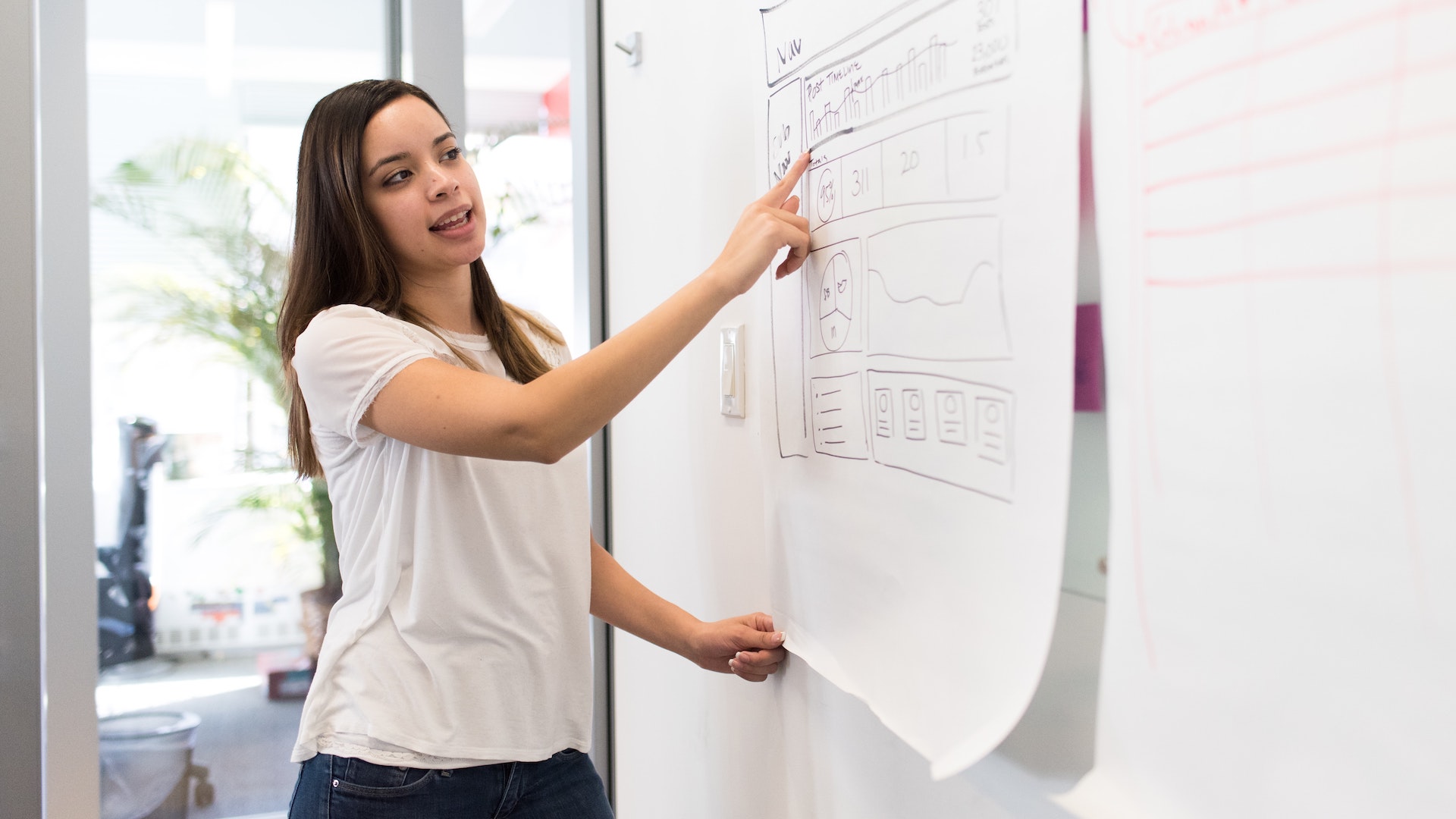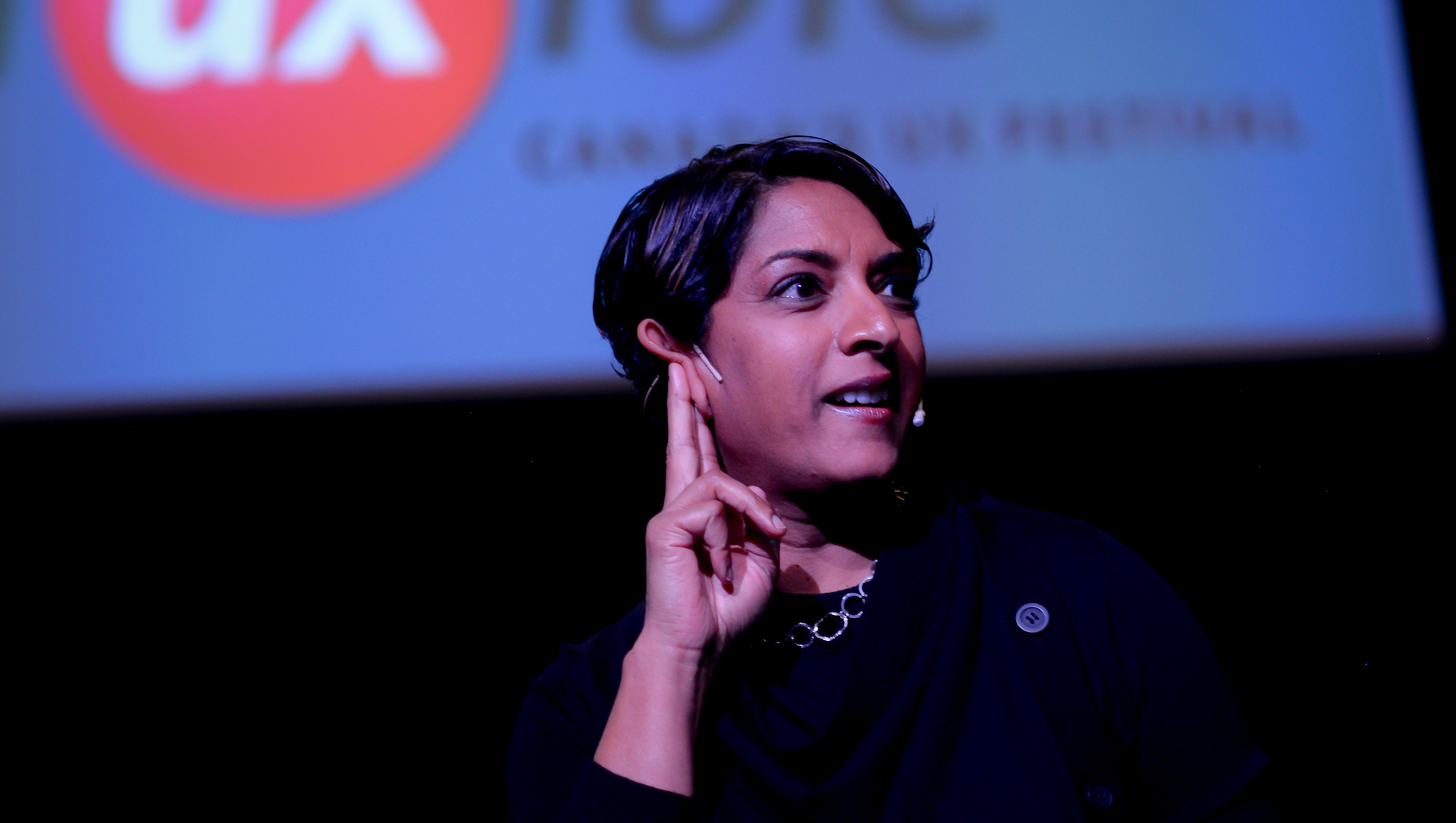For Zeitspace UX designer Megan Pollock, working with clients remotely is nothing new. Even before the pandemic, Pollock said she worked with Zeitspace clients remotely most of the time — even the local ones.
But when she returned from parental leave in September 2021, people rarely had cameras on in meetings, making it hard to build trust and relationships. Still, working remotely has given Pollock a new appreciation for meetings as a way to connect with clients and coworkers.
“I’ve found meetings and standups have been more valuable than ever. Sometimes it feels like, ‘Oh, good. We're having a meeting about this.’ Because, again, those points of contact are fewer and further between,” said Pollock.
As part of our ongoing series about how UX researchers and designers are adapting their work to a remote world, Zeitspace UX designer Megan Pollock talks about how working remotely has given her a new appreciation for meetings, the struggles of building trust with coworkers and clients in a remote world, and more.
How has the pandemic changed how you’ve approached your work as a designer/researcher?
We worked with clients remotely, even the ones that were local. We worked with them remotely most of the time (before the pandemic) just because it's easier to do a daily project stand up, for example. And so that interaction — working with clients through Meet or Zoom — hasn't felt that different. For a recent project I worked on there were people in San Francisco, Seattle … and Europe. So none of that would have ever been in person anyway. I haven't found the client work generally that different.
But especially coming back from (parental) leave, I feel like that's where I've noticed a difference. You don't have lunchtime conversations, you don't have, ‘Oh, hey, Peter, what are you working on?’ conversations. Or you're not literally sitting across from the development team so that you can say, ‘Hey, I'm thinking of designing this thing. What do you think about that?’ And so being virtual, I think you have to be a lot more intentional about maintaining those connections and those relationships, as well as those opportunities to talk and to check in. That has to all be intentional, because you're not going to just bump into them getting water. So, the biggest changes I've seen are internal.
It used to be that we sat beside each other or sat across from each other and things would come up naturally. It’s a lot more being intentional, actively bothering coworkers to get those interactions and those points of contact. And so I found meetings and standups have been more valuable than ever. Sometimes it feels like, ‘Oh, good. We're having a meeting about this.’ Because, again, those points of contact are fewer and further between. If I have a whole day with fewer meetings or no meetings — I don't think I have that very often — but it's sort of like, ‘I wonder what everybody else is doing today. I wonder if anybody else was even at work?’
I guess one other small thing is that, because people are now so comfortable being virtual, I didn't see any of my clients’ faces during my entire last project. So it's interesting, because you're trying to build up some of that trust and relationships. But sometimes, you almost never see their face or very rarely see their face.
What design and research tools are you using now, if any, that you weren’t before?
I've used Miro before, but I don't think I had run a user story mapping session with that. Normally, we would do it in our office, or in our client’s office, to do it with stickies. In general, we had all of these different remote tools, but it was like, ‘OK, here's what we want to do in person. If we can't, then what would we use? Here's the remote tools we would use.’ And now it's like, ‘Here's the remote tools. You don't have that other option.’ That's really the difference is that we've lost some of the other non-virtual options.
The Slack huddles, we probably wouldn't have used. That’s the only one we use to get around not having formal meetings all the time, to have that bumping into each other feeling, where it's like, ‘Hey, can we chat for a second?’ In general Slack feels more like a lifeline to the company than it ever did before. I have it on my phone and whenever somebody messages me, I'm like, ‘Oh, what are they talking about?’ Whereas before, it was if something super important, someone would come by your desk.
I've seen the huddles used a lot during (one) project where the developers are all coding and sharing screens, or being in each other's ears while they're working. People have also used huddles more on the social side. But the thing about the social is that, as I said before, you have to have someone who wants to be intentional about the social and wants to drive it.
Which design and research tools, if any, have you stopped using now that you were using before?
Whiteboards. One of my favorite activities in person was to work with my team to solve some sort of problem by drawing a bunch of stuff on a whiteboard and talking it all through. Those were often somewhat spontaneous and sprung from a discussion, so I haven’t found a tool that mimics that “Wait, what if we do it like this?” kind of interaction.
Is there anything you wish you knew when the pandemic began that you know now?
That this virtual world would be a more permanent thing. I think I would have put more work into creating new ways of working and collaborating earlier on, rather than trying to mimic in-person office life, thinking things would go back to normal.
It seems like at the beginning, we were trying to mimic stuff that was happening in the office, but virtually. Now we're getting to a point where it's like, ‘OK, this is going to be an all the time thing. So let's actually create some virtual practices around trying to be more social, like the huddles.’ Had we known everyone would be virtual or hybrid long term way back in March 2020, then maybe we would’ve started right off the bat, thinking about what things work really well virtually, or we might start noticing those things early. When I left (on parental leave), everyone was encouraged to have their cameras on all the time, and then came back and it was more optional. But I can see how it evolved that way. I don't know if there was ever a strong discussion around when it is better to have cameras off or cameras on. It just sort of evolved to ‘People are tired of pandemic life cameras off.’ If we're a virtual company for now, what's the best practice?
I think that's pretty consistent with what I've heard from other UX designers. We're all waiting around for things to go back to normal, but that's probably never going to happen so we need to figure stuff out now. And there are different organizations that are at different places in that journey. Some are further along, and had that realization a little bit sooner, and some are not as further along. What’s changed about your practice that you’ll keep doing after the pandemic is over?
I don't feel like a ton of stuff has drastically changed. It's kind of a funny question to think about, but I think one of the things is we’re more comfortable with virtual options so we’re able to use those more easily going forward. Instead of saying, ‘Well, we should get together in person to do this’ as nice as that is, maybe schedules are a bit hard with this group, and we decide instead to do a virtual user story mapping session. And for user interviews that I've been doing over Zoom, I get a video, I get a transcript, and I can take all that data, and make video highlights of this person trying to do this thing. That's one thing where I'd certainly consider using the virtual option over the in-person option. Again, there are pros and cons, but I would give equal weight or equal thought to the virtual option even if we had a more comfortable in-person option.
Is there anything you wanted to add or say?
Zeitspace has always been good at promoting work/life balance. During this pandemic, I’ve had a lot of life events happen. I’ve had a baby, we’ve moved houses, and sometimes I find that working from home keeps the life stuff at the top of mind all day, even while working. I actually miss having that work balance where you can go and ignore life stresses for the day and work on interesting problems with smart, friendly people who you build connections with. So, I think after the pandemic, when we have the opportunity to work in person sometimes, I might better appreciate that work-life balance.
This interview has been edited for length and clarity.





